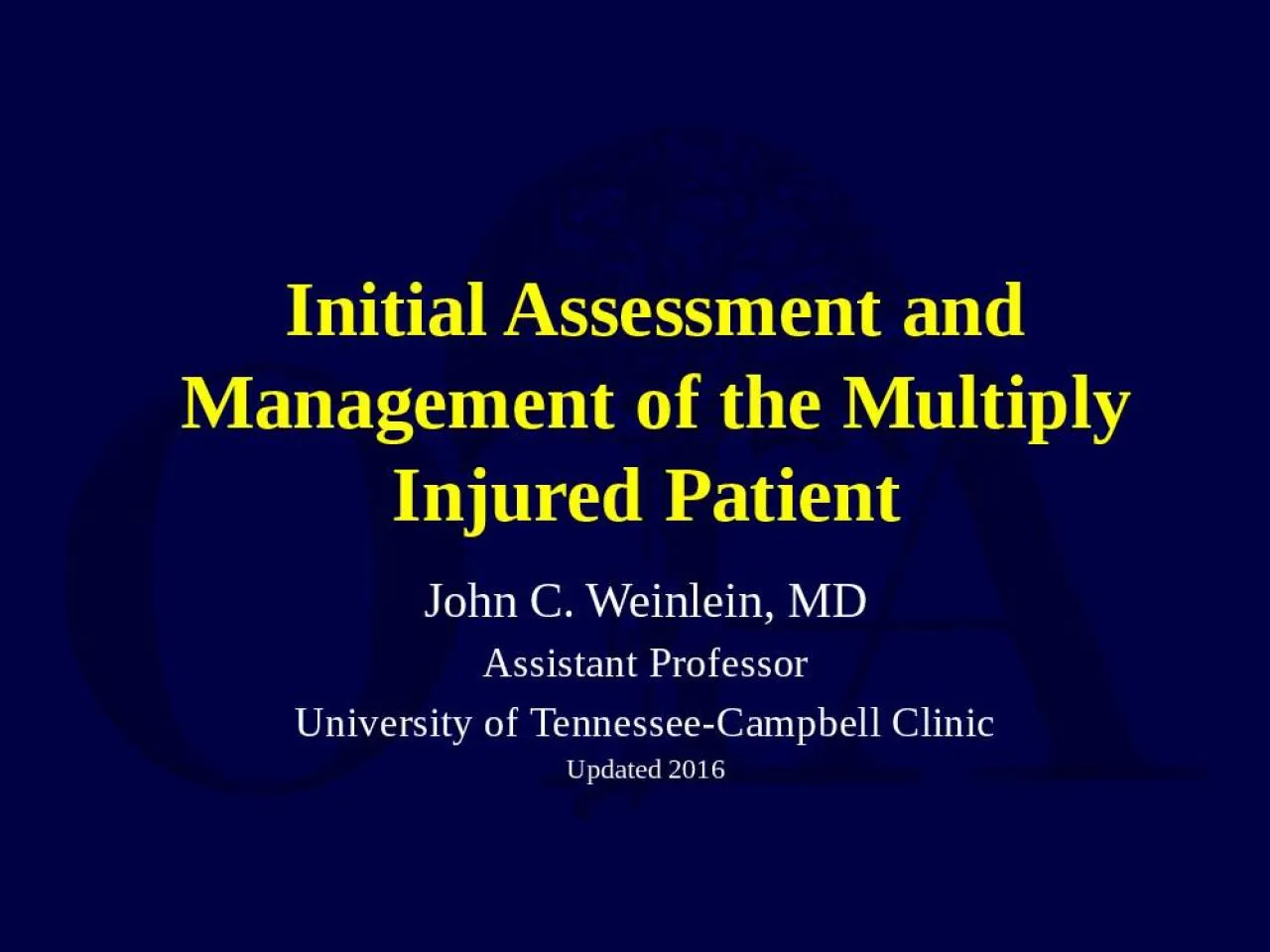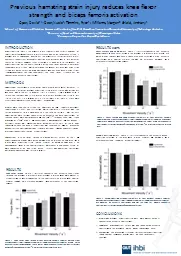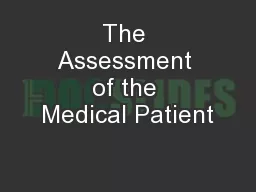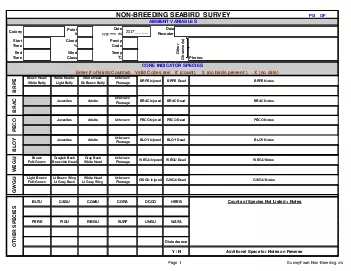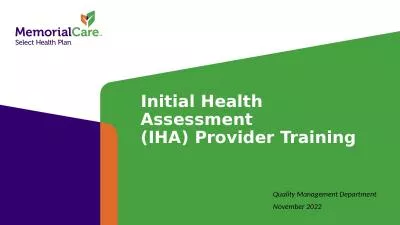PPT-Initial Assessment and Management of the Multiply Injured Patient
Author : ida | Published Date : 2022-02-15
John C Weinlein MD Assistant Professor University of TennesseeCampbell Clinic Updated 2016 Disclosures SaundersMosbyElsevier 7 Royalties financial or material
Presentation Embed Code
Download Presentation
Download Presentation The PPT/PDF document "Initial Assessment and Management of the..." is the property of its rightful owner. Permission is granted to download and print the materials on this website for personal, non-commercial use only, and to display it on your personal computer provided you do not modify the materials and that you retain all copyright notices contained in the materials. By downloading content from our website, you accept the terms of this agreement.
Initial Assessment and Management of the Multiply Injured Patient: Transcript
Download Rules Of Document
"Initial Assessment and Management of the Multiply Injured Patient"The content belongs to its owner. You may download and print it for personal use, without modification, and keep all copyright notices. By downloading, you agree to these terms.
Related Documents

